Introduction
Originated from Heian period (794-1185), Gion Festival, which has been registered in the list of ‘Intangible Heritage of Humanity’ by UNESCO, is one of the most famous festivals in Japan. Every year on July 17, the festival culminates in a parade of yamahoko, floats known as ‘moving museums’ because of their elaborate decorations with centuries-old tapestries, and wooden and metal ornaments. The festival is held by the Yasaka Shrine whose parishioners parade 32 floats to represents each self-governing parish. Approximately 150 thousands spectators from all around the world gather to see the parade every year.
With the development of computer graphics and virtual reality technologies, extensive researches have been carried out on digital cultural heritage. For decades, tangible cultural heritage contents including historical crafts, archaeological sites, and historical buildings have been digitally archived. Recently, digital archiving the intangible culture heritage contents, such as traditional festivals and behaviors of participants in cultural events have attracted more and more attention (Gandy et al. 2005; Magnenat-Thalmann et al. 2007; Papagiannakis et al. 2007).
In this research, we try to virtually reproduce Yamahoko Parade in Kyoto Gion Festival. We generated a content that combines motion and acoustics of the floats, crews, and spectators, within a virtual platform of ‘Virtual Kyoto’ (Yano et al. 2007). In current step, four well-known floats (Fune-hoko, Naginata-hoko, Kanko-hoko, and Kitakannon-yama) out of thirty-two floats were included in this virtual parade. We also reproduced the motion of four types of crews of Fune-hoko (Hikikata, Ondotori, Kurumakata, Hayashikata) using motion capture technique. This work contributes to the research of digital museum and provides a platform that allows the users to virtually experience the atmosphere of Yamahoko Parade in Kyoto Gion Festival.
Virtual Yamahoko Parade
We construct the virtual Yamahoko Parade using Vizard software. Vizard enables us to integrate and render CG models, animations, and sounds in a virtual space with real time interaction (Figure 1).

Figure 1: Construction of virtual Yamahoko Parade
Virtual Kyoto
A model of Shijo Street, one of the city’s main streets, is reconstructed as the Virtual Kyoto platform for the virtual Yamahoko Parade. Based on MAP CUBE data, the textures of street and building models in Virtual Kyoto are made by capturing photos of the real objects. The model of Shijo Street is transformed into VRML format and imported to Vizard (Figure 2).
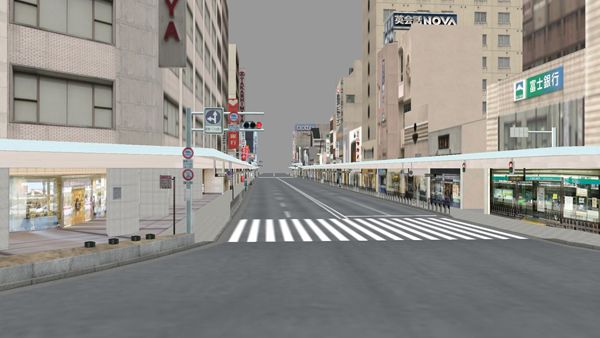
Figure 2: Shijo Street in Virtual Kyoto
Crowd Simulation of Spectators
Crowd simulation of spectators is an important element for regenerating the atmosphere of the event. In this work, we arranged about 730 characters on both sides of Shijo Street in Virtual Kyoto (Figure 3).
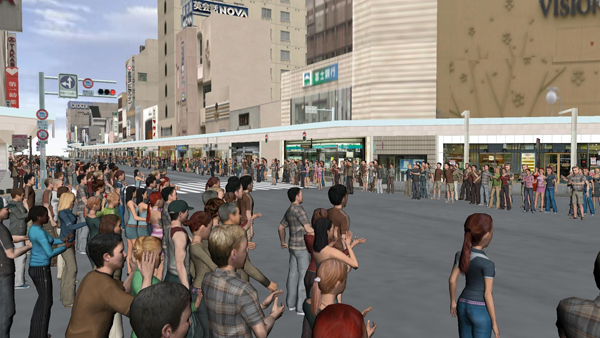
Figure 3: Crowd simulation of spectators
Three types of character models have been created: high polygon (about 8600 polygons), medium polygon (about 2800 polygons) and low polygon (about 1100 polygons) to build the real time virtual Yamahoko Parade. To make the crowd with realistic behavior, we add basic motions of talking, listening, shouting, and clapping hands to the models.
CG Floats of Yamahoko Parade
Four CG floats of Naginata-hoko, Kanko-hoko, Fune-hoko, and Kitakannon-yama were included in this virtual parade (Figure 4).
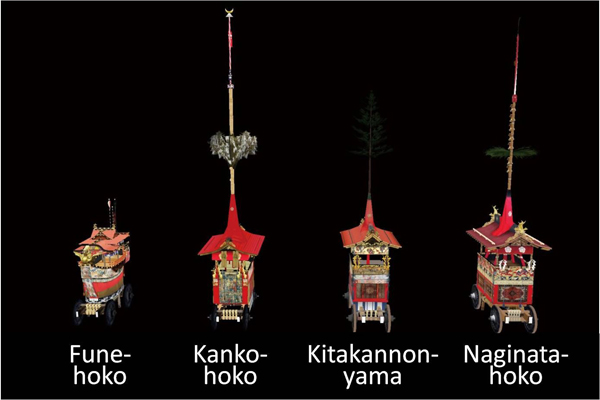
Figure 4: CG models of floats
The models have been created by laser-scanning detailed miniatures of the real floats, as well as surveying the floats’ drawings. The textures of the floats are made by capturing photos of the floats during the festival.
Models and Animations of Parade Crews
The Virtual Parade includes four kinds of parade crews: Hikikata who pull the float; Ondotori who lead the parade with Japanese fans; Kurumakata who control the float’s directions; and Hayashikata who play instruments on the platform of the float.
We created CG models of the crews using 3ds max and transformed them into Cal3D format to import to Vizard (Figure 5). The textures of their costumes were obtained from the real costumes.

Figure 5: CG models of Fune-hoko crews
Furthermore, since character animation of these crews is crucial for regenerating realistic movements of the parade, we use motion capture technique to reproduce the unique motions of the crews (Figure 6).
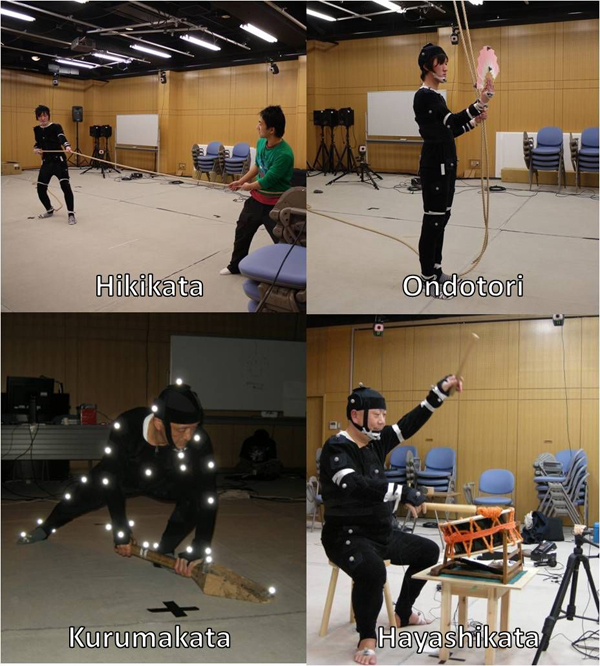
Figure 6: Motion capture of Fune-hoko crews
Acoustics of the Parade
We recorded the music of the parade played with the traditional instruments of drum, flute and bell by using multi-point measurement technique (Figure 7). Besides that, we also captured the sounds of ambient noise made by the floats, crews, and crowds. The collected sounds were integrated and imported to Vizard.
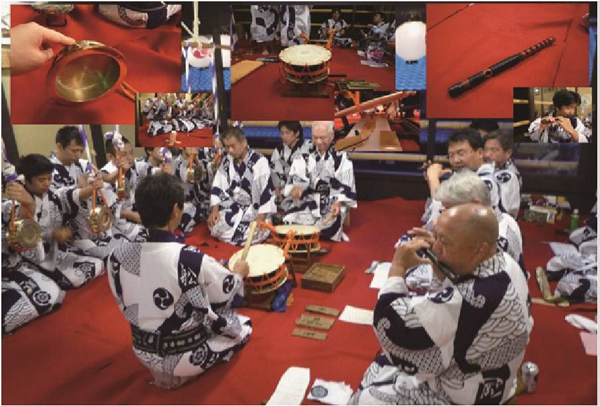
Figure 7: Recording acoustics
Demonstration of Virtual Yamahoko Parade
The virtual Yamahoko Parade can be operated in 3D with high fidelity sounds using an immersive virtual environment system (Figure 8). Users can interactively control the viewing position and angle in the virtual world at real time with a gamepad. Sample screenshots captured under 2D mode are illustrated in Figure 9.

Figure 8: Virtual Yamahoko Parade in an im-mersive virtual environment
Conclusion and Future Works
We virtually reproduced an intangible cultural material of Yamahoko Parade using 3D computer graphics and virtual reality technologies. We received positive feedbacks from the visitors in several exhibitions during which we demonstrated the virtual Yamahoko Parade.
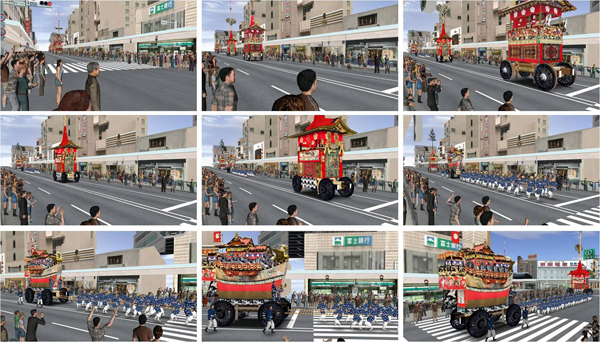
Figure 9: Screenshots of Virtual Yamahoko Parade
Our future works include improving crowd simulation by making more realistic crowd behaviors and creating more Japanese character models; enriching the movements of the floats and the crews; adding more float models to the virtual parade.
Furthermore, we are trying to build a virtual Yamahoko Parade experiencing system by which the users can also experience the vibration as they are riding on the virtual float. We collected the acceleration data of the float with acceleration sensors during the real parade and experimentally reproduced the vibration using a vibration platform. An immersive system which integrates interactive CG animation, high fidelity sound, and realistic vibration is under construction.
Fundings
This research has been partially supported by the Digital Museum Project in the Ministry of Education, Culture, Sports, Science and Technology, Japan. The authors thank the Gion Festival Fune-hoko Preservation Association for the collaboration.
References
Gandy, M., S. Robertson, W. Price, and J. Bailey (2005). The Design of a Performance Simulation System for Virtual Reality. In Proceedings of Human-Computer Interaction International 2005. Las Vegas.
Magnenat-Thalmann, N., N. Foni, G. Papagiannakis, and N. Cadi-Yazli (2007). Real Time Animation and Illumination in Ancient Roman Sites. The International Journal of Virtual Reality 6(1): 11-24.
Papagiannakis, G., and N. Magnenat-Thalmann (2007). Mobile Augmented Heritage: Enabling Human Life in Ancient Pompeii. The International Journal of Architectural Computing 2: 395-415.
Yano, K., T. Nakaya, and Y. Isoda (2007). Virtual Kyoto: Exploring the Past, Present and Future of Kyoto. Kyoto: Nakanishiya.

